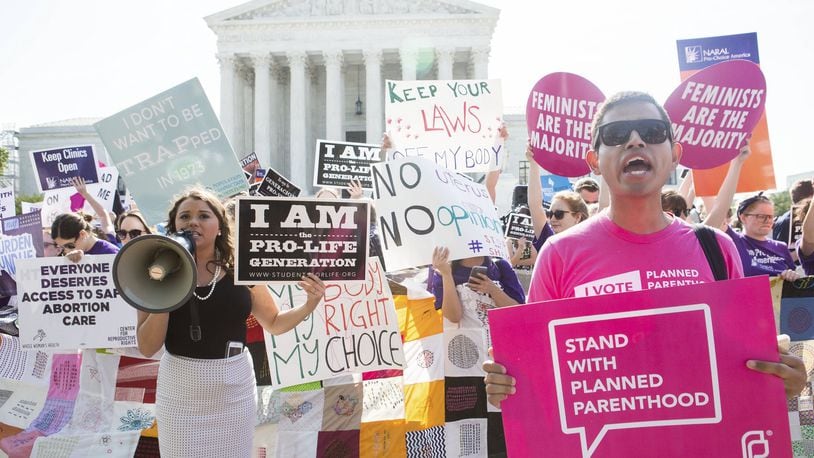The legislature Tuesday approved a bill that would prohibit abortions once a fetal heart beat is detected, which usually takes place in the sixth week of a pregnancy. The second bill, approved Thursday, would ban abortions after the 20th week of a pregnancy.
“They both probably would be struck down,” said Susan Low Bloch, a professor of law at Georgetown University who served as a law clerk to the late Justice Thurgood Marshall. She predicted the heart-beat bill would be struck down as an “undue burden because some women don’t even realize they are pregnant after six weeks.”
Marc Spindelman, a professor of law at Ohio State University, said a majority on the high court continues to regard Casey as binding and would “still hold after Justice Scalia’s replacement” is nominated by Trump and confirmed by the Senate.
Kasich has yet to say whether he would sign either bill. But federal courts struck a six-week ban approved by North Dakota in 2013 and courts have invalidated bans on abortions after 20 weeks.
The Supreme Court in 1973 ruled in Roe v. Wade a woman has a constitutional right to an abortion and government could only prohibit abortions in the third trimester of a pregnancy.
In a famous three-judge opinion in Casey in 1992, Kennedy, and Justices Sandra Day O’Connor and David Souter not only upheld a woman’s right to an abortion guaranteed by Roe, but discarded the trimester scheme.
They substituted a new standard declaring a state could place an undue burden on a woman’s right to an abortion and that states could not outlaw abortions under viability of the fetus took place at 23 to 24 weeks of a pregnancy.
“As with any medical procedure, the state may enact regulations to further the health or safety of a woman seeking an abortion,” O’Connor wrote. “Unnecessary health regulations that have the purpose or effect of presenting a substantial obstacle to a woman seeking an abortion impose an undue burden on the right.”
In 2007 when Kennedy wrote the majority opinion upholding a federal ban on a late-term abortion procedure known as intact dilation and extraction, he gave opponents of abortion rights some hope he was wavering on Roe and Casey. He wrote as long as “it does not impose an undue burden, the state may use its regulatory power to bar certain procedures and substitute others.”
But earlier this year, Kennedy joined a five-member majority to strike down a Texas law requiring physicians performing abortions to have admitting privileges at nearby hospitals and insisted abortion clinics have hospital-like surgical standards. Writing for the majority, Justice Stephen Breyer concluded the law places a “substantial obstacle” in in the path of a woman’s constitutional right to an abortion.”
Ruth Colker, a professor of law at Ohio State University, said the six-week ban “is dead on arrival” before the Supreme Court, adding “Kennedy seems pretty committed to abortion rights.”
Jana Heigl of The Columbus Dispatch’s Washington bureau contributed to this story.
Follow our award-winning political coverage in Washington and Columbus on Facebook at Ohio Politics.
About the Author
